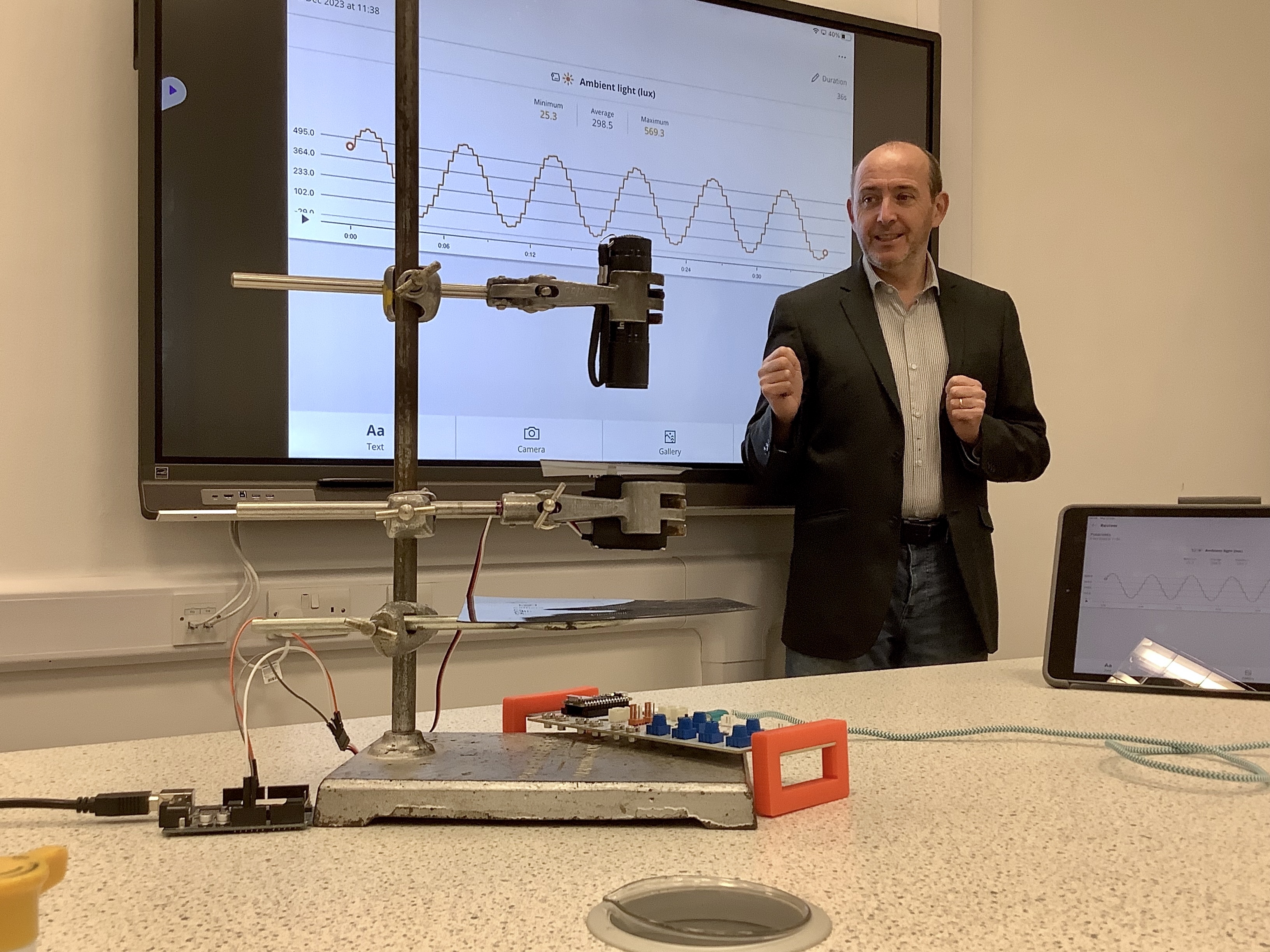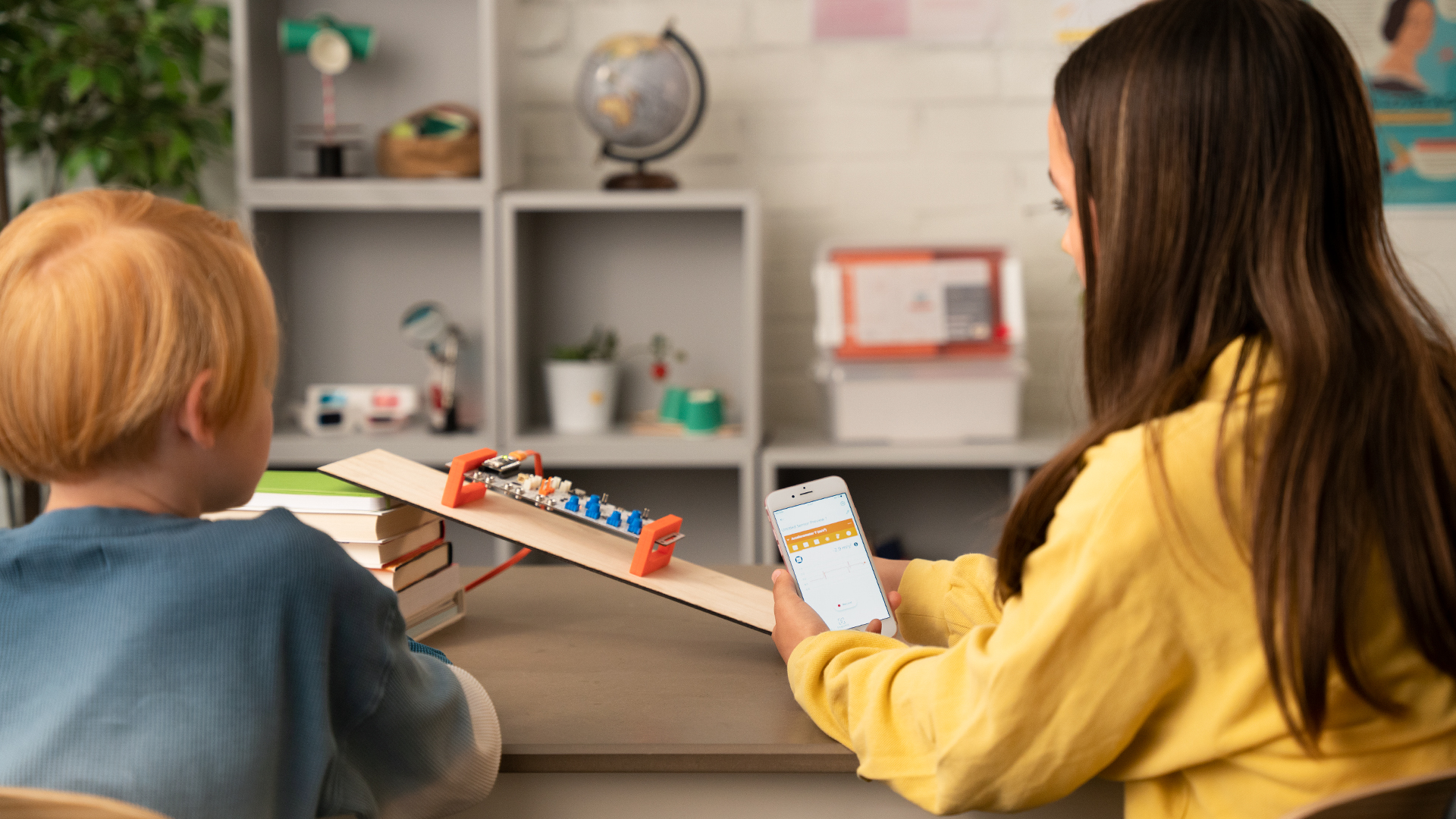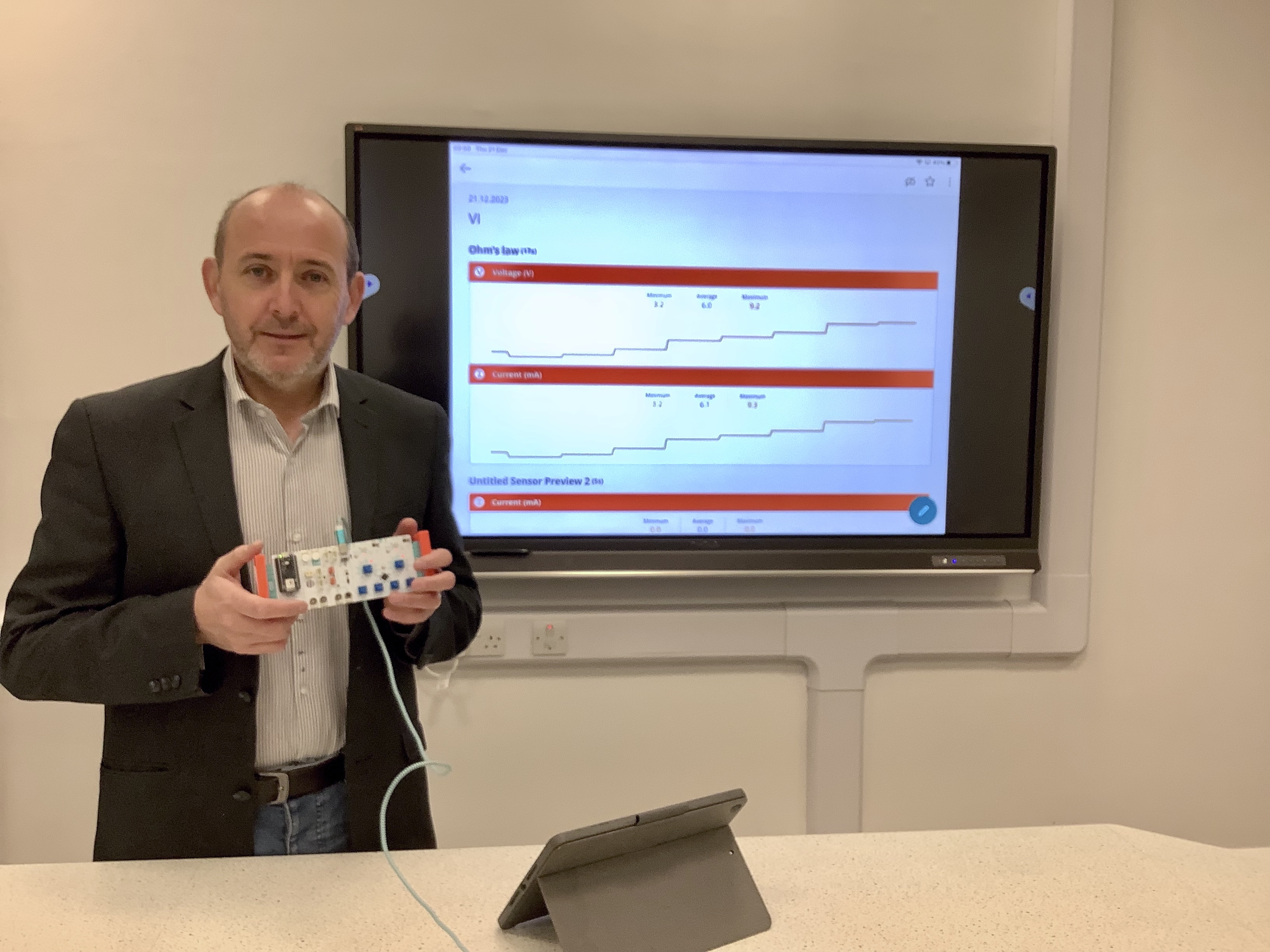
Alan Bates is a high school physics teacher from the UK. He was deeply involved in helping Arduino Education’s product, R&D, and content teams to develop both the hardware and the learning content for the Science Kit R3.
He ensured that this solution is relevant for today’s science curricula by testing all the experiments and providing valuable insights into teachers’ needs. Additionally, he made certain that the kit links to the real world, and that it also teaches students important future skills, such as problem-solving and teamwork.
We caught up with Alan to ask him about how he worked with the Arduino Education team to develop the learning content.
The inspiration behind the Science Kit R3
One of Alan’s main motivations for helping Arduino develop the learning content for the kit was that he needed a solution for his own classroom. He says, “As a physics teacher, I was in search of a data logging system with a diverse collection of sensors that could be easily used by students and teachers in a science lab. I wanted a solution that would enhance learning through practical activities, experiments, and demonstrations.”
Alan goes on to say that, “Being able to complete traditional experiments anywhere, in the school lab or beyond, was also important. Science education doesn’t stop when you leave the school grounds.” The Science Kit R3 facilitates learning anywhere, and on everyday devices whether that’s a tablet, phone, or Chromebook.
Alan and the Arduino team wanted to create a solution that provides the “opportunity to wonder, explore, take a risk, test an idea, take measurements, and complete experiments, anywhere and anytime.” And that’s exactly what the kit does.
The unexpected challenges and discoveries made during the development of the kit
Of course, creating a new science solution definitely comes with challenges. Alan says, “I wanted to ensure, like other Arduino products, that the kit would not only look good but would also work perfectly. In theory, it can measure a wide range of quantities and display data in real-time on smart devices. In reality, the quality of these measurements is crucial in making a tool that can be used to reinterpret traditional experiments and to develop new ones." “So I had moments of apprehension! My expectations were high, but after taking preliminary measurements, I fully appreciated the quality of the kit, both in terms of hardware and software, and the impact it could have on physics and science education. I’ve since realized just how much there is that the kit can measure and/or demonstrate.”
How does the kit help students grasp complex physics concepts?
Alan says, “There are numerous experiments in the kit that have big value for student learning. Students are surprised when a simple observation can disagree with preconceived knowledge.” Some of Alan’s favorite experiments include:
- Color and temperature
Before the experiment, students are asked which colored surface they perceive to be hotter, red or blue. Often, students will answer red. The color sensor, included in the kit, is used to measure the color-temperature of white light – and to the surprise of many, the blue colored surface has a higher color-temperature! This simple observation can open an entire topic of study on electromagnetic waves, wavelength, energy, and stars.
- The inclined plane
Students learn about vectors within a mathematical framework, but understanding what a vector is and its components allows for a deeper understanding. In this experiment, students are first asked what they expect the acceleration of a carrier should be down an inclined plane. The carrier accelerometer is then used to measure the acceleration at different angles or heights. Students are able to connect angle with the value of acceleration and produce a value for acceleration due to gravity.

- Magnetic effects of DC & AC currents
The measurement of magnetic field strength around a handmade solenoid allows students to investigate various properties of solenoids and understand that the magnetic field is a direct consequence of the flowing current. Students place the magnetometer on the carrier close to their self-made solenoids to investigate the effect of current on the strength of the magnetic field.
- The refrigerator door
It’s widely thought that a freezer door is harder to open just after you shut it. When he was designing the learning content, Alan wondered if it was possible to actually measure the air pressure inside a refrigerator to explore if the door is actually more difficult to open after it is closed using the kit. He says, “To my surprise, after placing the battery-powered carrier inside the refrigerator, the air pressure dipped but then slowly returned to ambient pressure level. I encourage students and teachers to try it and use the data to explain, in terms of air particle behavior, why the door is initially hard to open.”
Science experiments that don’t require coding
One of the aims of the Science Kit R3 was for physics, chemistry, and biology teachers and students to be able to use the kit as soon as they open the box – no coding required.
In Alan’s words, “You can use the kit with the Science Journal app, turning your device into a data logger that can capture, record, and display data in real-time. There are no coding or electronics prerequisites.
“Students can take the lead on their own investigations, test their ideas, and explain their findings. The science lab is transformed into a wider world that can give students the autonomy to find their own way and to think like real scientists.”
Aligning the learning content with curriculum standards
When Alan was creating the learning content, he knew it had to align with global standards. He says, “Although physics is physics, the kit and its content comfortably aligns with curriculum standards around the globe.
“For example, the experiments align with AP Physics, NGSS and NYS in the US, GCSE and A level in the UK, and the international IB Diploma Programme. The experiments are designed to develop practical skills, to teach students how to analyze data and to produce valid conclusions. However, the experiments offer a glimpse of the capabilities of the kit. The Explore More sections for each experiment provide directions to build open-ended investigations.”
What do students think?
Alan experimented with using the kit with his physics students as he was creating the learning content. He made the following observations about how his students found using the kit in their lessons:
- It was amazing how quickly students connected the kit with their devices and started exploring the sensors
- They were excited about viewing live data
- It was easy for them to take screenshots of the data graphs and import them into lab reports
- They loved getting hands-on with the experiments, such as walking up the stairs with the carrier to observe a decrease in air pressure and measuring the time between bounces for a basketball with different air pressure.
Alan says, “The response is very positive, and I’ve started to rewrite instructions for traditional experiments to take into the new kit consideration.”
Why is this kit important to have in a science classroom?
Alan’s answer to this question is, “I often wonder if we as educators are truly capturing the imagination and creativity of potentially talented students.
“I dream of making experimental science accessible to everyone. Not only with textbooks, but also with a physical device like this kit that allows students to explore the true nature of science, to question knowledge, to find the truth with measurements, and to develop a better way through a personalized approach. I believe this kit offers an alternative approach that is a sure step in the right direction.”

How will teachers use the kit in their classrooms or labs?
Alan believes that teachers will replicate well-known experiments using the Science Kit R3. He says, “Students and teachers will build expertise and become familiar with the kit sensors and the Science Journal interface, for example, instead of using an ammeter, you can use the kit’s current sensor, or the external temperature probe instead of a thermometer. The online content platform for the kit offers a collection of experiments to try with instructions for data collection and data analysis, with an Explore More section with suggestions for open-ended investigations.
Teachers should also take a look at the video tutorials as they’ll support you with practical advice on how to use the kit for lab-based activities, demonstrations, and student design investigations.”